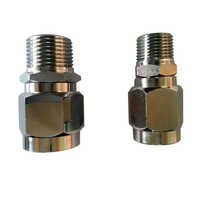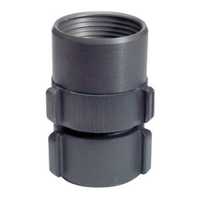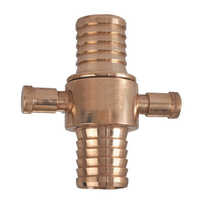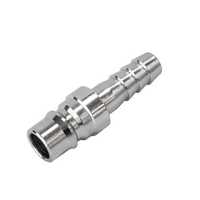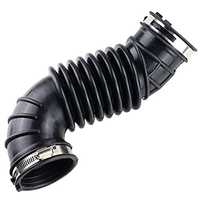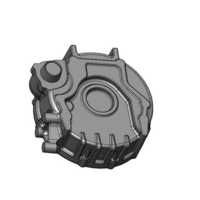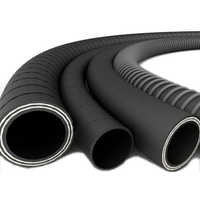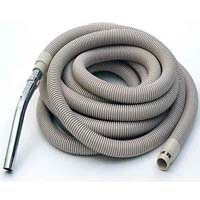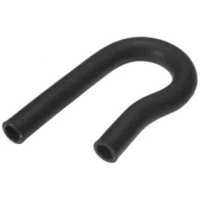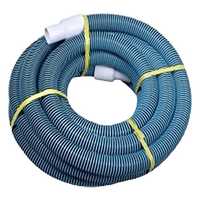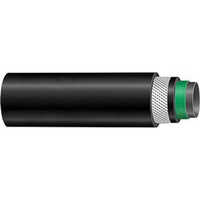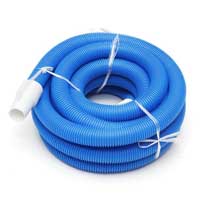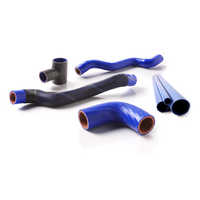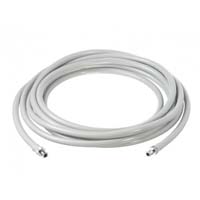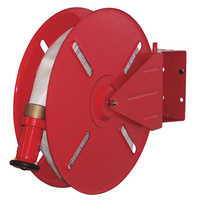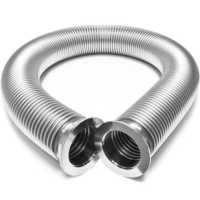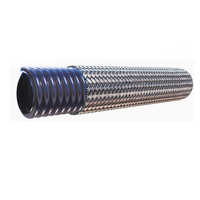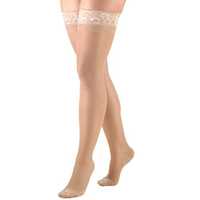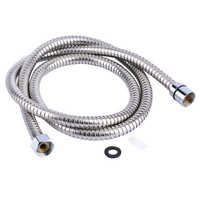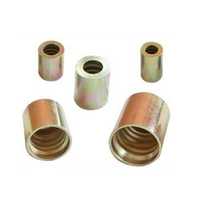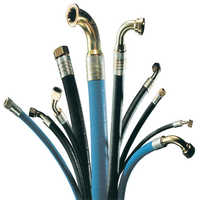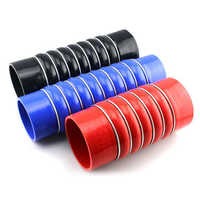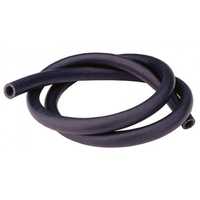Hoses
(13201 products)
Explore More Categories
Made in India
Braided Air Hose
Price: 22 INR (Approx.)/Meter
Hardness - Rigid
Product Type - Braided Air Hose
Size - Comes in various sizes
5 Years
Business Type: Manufacturer | Exporter
TIRUPATI POLY FLEX
Made in India
Braided Hoses
Price: 500 INR (Approx.)/Piece
MOQ - 15 Piece/Pieces
15 Years
Business Type: Manufacturer | Distributor
SHAH EXPANSION JOINTS (BELLOWS) MANUFACTURERS
Made in India
Silicone Braided Hose Pipes Application: Fire Fighting
Price: 750 INR (Approx.)/Meter
MOQ - 10 Meter
Product Name - Silicone Braided Hose Pipes
Product Type - Silicone Braided Hose Pipes
Material - Silicone Rubber
15 Years
Business Type: Manufacturer | Supplier
POLYERUBB INDUSTRIES
PVC Flexible Pipe
9 Years
Business Type: Manufacturer | Supplier
ZARAL ELECTRICALS
Made in India
Silicon Rubber Hoses
9 Years
Business Type: Manufacturer | Distributor
KP RUBBER & POLYMER
Indian Inquiries Only
Hoses Pipe Length: 25 Foot (Ft)
Price: 30.00 INR (Approx.)/Piece
MOQ - 500 Piece/Pieces
Thickness - 3 - 10 Millimeter (mm)
Length - 25 Foot (ft)
Product Type - Hoses
17 Years
Business Type: Manufacturer | Supplier
SOFTEX INDUSTRIAL PRODUCTS PVT. LTD.
Made in India
Metal Corrosion Proof Mild Steel Hose Connector For Industrial
Color - Golden
Size - 1/4"
Material - Metal
4 Years
Business Type: Manufacturer | Distributor
VISION ENTERPRISES
Indian Inquiries Only
Made in India
Hose End Fittings
Price: 250 INR (Approx.)/Piece
MOQ - 20 Piece/Pieces
Gear Tooth Profile - Other
13 Years
Business Type: Manufacturer | Supplier
GOYAL AUTOMOTIVES
Made in India
Hose Reel Drum Application: Fire Safety
Price: 8500.00 INR (Approx.)/Piece
MOQ - 10 Piece/Pieces
Product Type - Hose Reel
Material - Mild Steel and Brass
Warranty - 1 Year
20 Years
Response Rate: 84.69%
Business Type: Manufacturer | Distributor
BRILLIANT ENGINEERING WORKS
Made in India
Duct Hoses Hardness: Rigid
Price Trend: 2500.00 - 25000.00 INR (Approx.)/Piece
MOQ - 1 Piece/Pieces
Usage - For Building Ventilation
Color - Silver
Hardness - Rigid
12 Years
Business Type: Manufacturer | Exporter
PARTH VAlVES AND HOSES LLP
Air Hose Inside Diameter: 6
MOQ - 10 , Meter/Meters
Size - 1/2 inch, >3 inch, 3/4 inch, 1 inch, 3 inch, 2 inch
Reinforcement - High Tensile Synthetic Textile Piles
Medium - Other
16 Years
Business Type: Manufacturer | Distributor
BLASTECH
Indian Inquiries Only
Made in India
Dn2 Microbore Hoses
Price Trend: 1000 - 4000 INR (Approx.)/Number
MOQ - 50 Number
9 Years
Business Type: Distributor | Supplier
ISHWAR CLIMATE SOLUTIONS PRIVATE LIMITED
Made in India
Carbon Free Hose
Price Trend: 1000.00 - 10000.00 USD ($) (Approx.)/Piece
MOQ - 10 Piece/Pieces
11 Years
Business Type: Manufacturer | Exporter
THERMA FIELD POWER COMPONENTS PRIVATE LIMITED
Made in India
Braided Silicone Tubing
13 Years
Business Type: Manufacturer | Exporter
KIRAN RUBBER INDUSTRIES.
Made in India
Cryogenic Hose Pipe
Price: 7000 INR (Approx.)/Piece
MOQ - 10 Piece/Pieces
Color - Silver
Size - 3/4 inch
Medium - Gas
Business Type: Supplier | Trading Company
Abhijit Enterprises
Made in India
Silicon Pressure Hoses
5 Years
Business Type: Manufacturer | Exporter
R. C. S. ENTERPRISES
Plain Industrial Hoses
13 Years
Business Type: Distributor | Exporter
VNM HYDROTEK
Black Discharge Hose Pipe
Usage - Industrial
Color - Black
Product Type - Discharge Hose Pipe
15 Years
Business Type: Manufacturer | Supplier
HRI ENGINEERING COMPANY
Cascade Hose Reel
3 Years
Business Type: Manufacturer | Supplier
MEL SERVICES
Made in India
Blue Pool Vacuum Hose Pipe
Price: 2200 INR (Approx.)/Roll
MOQ - 15 Roll/Rolls
Length - 15 Meter (m)
Size - 32MM TO 38 MM
Usage - POOL HOSE FOR CLEANING SWIMMING POOL
3 Years
Business Type: Trading Company
DIVYA JYOT PIPE STORES
Indian Inquiries Only
Metal Pp Hose Collar Joints
Price: 1.5 INR (Approx.)/Unit
MOQ - 500 Unit/Units
Product Type - PP Hose Collar
Usage - Industrial
Material - Metal
3 Years
Business Type: Manufacturer | Distributor
PARSHWA INDUSTRIES
Suraksha LPG Hose
4 Years
Business Type: Manufacturer | Exporter
PRERAK ENTERPRISE
Made in India
Different Available Plastic Coiled Hose
Price: 180 INR (Approx.)/Unit
MOQ - 10 Unit/Units
Usage - Industrial
Shape - Round
Length - 10 Meter (m)
3 Years
Business Type: Trading Company
GURU MARKETING
Indian Inquiries Only
Hose Reels - Color: Red & Black
Price Trend: 340.00 - 356.00 USD ($) (Approx.)/Set
MOQ - 10 Set/Sets
Usage - Industrial & Commercial
Color - Red & Black
Product Type - Hose Reels
6 Years
Business Type: Manufacturer | Distributor
JO LONG MACHINE INDUSTRIAL CO., LTD.
Made in India
Steel Wire Reinforced Conduit
11 Years
Business Type: Manufacturer | Exporter
TECHNOFLEX
Made in India
Black T And S 5Hr-232-01 Hose Reel
Price: 39500 INR (Approx.)/Unit
MOQ - 1 Unit/Units
Usage - Industrial
Color - Black
Shape - Round
4 Years
Business Type: Manufacturer | Distributor
JANSHAKTI INDUSTRIES
Made in India
White Silicone Sleeves
Price: 3500 INR (Approx.)/Piece
MOQ - 10000 Piece/Pieces
Usage - Industrial
Size - Different available
Product Type - Silicone Sleeves
2 Years
Business Type: Manufacturer | Exporter
ACROSIL PRODUCTS PRIVATE LIMITED
Made in India
1 To 8 Inch Round 30 Meter Flexible Grey Plastic Air Gas Duct Hose
Price: 153.6 INR (Approx.)/Meter
Medium - Other, Air, Gas
Product Type - Hose
Length - 10-30 Meter (m)
2 Years
Business Type: Manufacturer | Supplier
KARAN POLYMERS PVT. LTD.
Hoses Manufacturers | Suppliers in India
| Company Name | Location | Member Since |
|---|---|---|
| Brilliant Engineering Works | Mumbai, India | 20 Years |
| Softex Industrial Products Pvt. Ltd. | Kolkata, India | 17 Years |
| Blastech | Mumbai, India | 16 Years |
| Shah Expansion Joints (Bellows) Manufacturers | Vadodara, India | 15 Years |
| Polyerubb Industries | Ahmedabad, India | 15 Years |
| Hri Engineering Company | Gurugram, India | 15 Years |
| Goyal Automotives | New Delhi, India | 13 Years |
| Kiran Rubber Industries. | Mumbai, India | 13 Years |
| Vnm Hydrotek | Mumbai, India | 13 Years |
| Parth Valves And Hoses Llp | Pune, India | 12 Years |
What are Hoses
Introduction
To transport water from one place to another, a hose is a hollow tube that may bend or twist. Pipes are another name for hoses. A pipe is a stiff tube, while a hose is flexible tubing.
Depending on the conditions and required pressure rating, polyurethane, natural rubbers, nylon, PVC, or synthetic or polyethylene are typically used in applications. Recently, specialized LDPE and LLDPE polyethylene grades have been developed for use in making hoses. In addition to rubber, PTFE (Teflon), and stainless steel are also common hose materials.
Firefighters also use hoses to spray water on flames; however, garden hoses are more commonly used for watering plants and cleaning vehicles. A hose, like a pipe, is long and thin and hollow, allowing liquid to flow through it, but while pipes are often made of rigid metal or hard plastic, a hose can bend and swivel to accommodate various angles and curves. Sheer stockings can also be used as a verb, meaning "to spray with a hose," and as a noun, meaning "to spray with a hose."
Different Types of Hoses
1. Soaker Hoses
As opposed to wands or sprinklers, soakers can reduce water consumption by as much as 70 percent. Not a drop is wasted because it is applied directly where it will have the most impact, at the soil level and in close proximity to the plant's roots.
2. Expandable hoses
An expanding hose is typically made up of a rubber tube covered in a strong, stretchy fabric, however, there are many variations on this design. Although it may seem like a novelty, I really like how compact and portable my 100 feet of cord is; I can keep the entire thing in a five-gallon bucket.
3. Metal Hoses
Since the hose cools off more rapidly than other materials if it gets heated in the sun, I don't waste water by letting the water run until it's no longer hot. It will get caught in crevices in the sidewalk or on corners, but a quick snap will free it.
4. Air hoses
Air hoses have a wide variety of uses including industrial air service, compressor lines, pneumatic tools, low-pressure spray, and more. A quick disconnect or coupling mechanism can be added to an air hose assembly to facilitate quick and easy line hookups.
5. Food & Beverage hoses
Sanitary transfer hoses for food and drink are used to transport liquids from tank trucks into processing plants. These hoses are designed to be used in the food and beverage sectors, and they are capable of suctioning and discharging a wide variety of dry bulk materials, liquids in gravity flow, and vacuum services.
6. Steam hoses
Steam hoses have a wide variety of applications, including but not limited to steam cleaning, pressure washing, temperature regulation, fire suppression, pumping, thawing, blow-out service, steam pumps, hoists, chemical facilities, and refineries. Common materials include synthetic rubber and steel wire for reinforcement.
7. Petroleum Hoses
Oil, gas, and other petroleum-based solvents can be transferred with the use of petroleum transfer hoses and tubes, which have several applications.
8. Light Duty Hoses
These hoses often have plastic fittings, narrower diameters, and cheaper pricing because they are composed of vinyl, though they may also be reinforced with a mesh or numerous plies.
9. Flexible Hoses
You can choose between rubber and vinyl for the most popular type of garden hose. Whether or whether they are suitable for your purposes depends on the method used and the quality of the material.
10. Coil Garden hoses
A coiled hose is a length of hoses that have been constructed into a tight spiral that can be coiled up when not in use and uncoiled to an almost straight length when in use. As a rule, they are shorter in length. Garden hoses typically come in lengths of 15 feet or 25 feet, while some manufacturers provide longer hoses with diameters of half an inch or less, resulting in significantly reduced water flow and pressure.
Common Properties of Hoses
1. Neoprene
Neoprene, often known as chloroprene, is a popular synthetic rubber that sees widespread application around the globe. After Dupont dropped their trademark on their invention, the word neoprene quickly became the industry standard. It can withstand a larger temperature range and is resistant to mild oils and chemicals.
2. Buna-N (Nitrile Butadiene Rubber)
In 1934, Buna-N was patented, and since then, it has seen extensive use. Buna's exceptional resistance to oil and other chemicals makes it a useful material for transporting petroleum-based products like diesel fuel and crude oil. Buna-N, like EPDM, superficially resembles neoprene, underscoring the need of employing the proper rubber compound for the purpose-built hose.
3. Polyurethane
Heavy-duty applications in agriculture, industrial manufacturing, mining, and the lumber sectors call for the durability and sturdiness of polyurethane hoses. Polyurethane hoses are exceptionally resistant to the elements, including ultraviolet light, high and low temperatures, and abrasion.
4. Natural Gum Rubber
Common uses include hoses for discharging or sucking up cement, transporting material for building projects, and even medical tubing.
Natural gum rubber is very abrasion-resistant, comes in a tan color, and has stretchy qualities (think rubber band or latex gloves).
5. EPDM (Ethylene Propylene Diene Monomer
Since oil and natural gas are used to create EPDM, the price of its raw materials is highly dependent on market forces. EPDM's resilience to ozone, heat, and temperature makes it an ideal material for usage in outdoor settings. EPDM is put to good use in the cover of the standard garden hose used around the house.
6. Silicone
Silicone is a great material for hoses since it is adaptable, long-lasting, and flexible. Silicone is commonly used to channel hot gases in the exhaust, fuel, and engine systems due to its resilience in the face of high temperatures.
Furthermore, silicone's high inertness makes it an excellent material for chemically resistant tubing and flexible chemical hoses, both of which see frequent use in the harsh conditions of the chemical processing industry.
7. Coated Fabric
The use of coated fabric hoses is highly recommended for high-heat environments. The pinched-in continuous production design ensures these hoses are long-lasting and safe from fire. They are built to keep working properly even when the temperature outside soars beyond 1200 degrees Fahrenheit.
Industrial Uses of Hoses
Here are the industries that use hoses:
1. Agriculture
Assemblies of hydraulic hoses find widespread application in agricultural machinery.
2. Automotive
Every step of production, from raw materials to the finished product, makes use of hoses.
3. Manufacturing
A hydraulic hose's many applications in manufacturing are best seen along assembly lines and with the rise of robotics.
4. Construction
To help construction equipment lift large building materials, hydraulic hoses are frequently employed. The use of earthmoving equipment in the building business overlaps with that in mining.
5. Mining
Many machines in the mining industry rely on hydraulics. Specifically, hydraulic hoses are used to supply power to the arms of earthmovers, allowing them to lift heavy objects.
Uses:
- Air hoses see widespread application in the aforementioned pneumatic networks, compressors, and blowers. These items are the finest to purchase if you require pressurized air.
- Hydraulic hoses have several uses in industry, particularly for operating massive equipment that is in charge of transporting materials and other heavy objects.
- Irrigation, gardening, cleaning, and HVAC all benefit from the use of water hoses, hot water hoses, and steam hoses.
- A chemical hose is one of the most durable and versatile hoses available. It's made so that hazardous materials like acid and other poisonous compounds can be transported without much hassle.
FAQs: Hose
Q. How to select the right type of hose?
Ans. Here is the guide:
- The size of the hose must be determined first.
- The next step is to select an appropriate hose.
- Consider the inches of the hose you need
- Brand
Q. What are the uses of hoses?
Ans. Fluids can be transported via hoses, which can be fitted with various fittings such as nozzles, flanges, and spigots to regulate the flow rate. A garden hose can either be directly connected to a sprinkler system or used to water plants in a garden or lawn.
Q. What are the parts of the hose?
Ans. The fittings, the braid, the tube, the braid collars, the fluid and a protective outer layer are the parts of the hose.
Q. What is the difference between hoses and tubes?
Ans. Instead of just a tube, a hose has reinforcements all the way through it. If the pressure is high, you'll want a hose, but if it's low, a tube will do just fine.
Related Categories
Abrasives
Acoustic Products
Acrylic Sheets
Air Blowers
Air Compressors & Air Separation Plants
Air Cooler
Air Dryers
Air Receiver
Air Valves
Aluminum Castings
Anchors
Anti Vibration Mounts
Ball & Roller Bearings
Ball Valves
Ballast Making Machines
Bearing Parts & Components
Bearings
Bellows & Expansion Joints
Belt Pulleys
Boilers, Components & Spares
Bolts
Bright Bars
Bristles
Burners/Industrial Burners & Incinerators
Bushings & Bushing Parts
Butterfly Valves
CNC Machined Components
Cable Pulleys
Capital Goods
Carbon & Graphite Products
Castor Wheels
Centrifugal Pumps
Centrifuges
Ceramics
Chains & Chain Link Fence Fittings
Cleaning Equipment
Clips, Clamps
Coils
Combustion Equipment
Compression Springs
Compressors & Allied Equipment
Control Valves
Conveyor & Conveyor/Industrial Belts
Cooling Tower & Chilling Plants
Corrosion Protection Materials
Coupling
Cranes
Cryogenic Equipment
Cutting Tools, Broaches & Cutters
Departmental Shelving
Diaphragm Valves
Die Castings
Dies & Moulds
Dies,Jigs,Fixtures
Diesel Engine & Electric Locomotive Spares
Draught Fan
EOT Cranes
Electric Hoists
Electric Motors & Engines
Electroplating Chemicals & Equipment
Elevators, Lifts & Escalators
Energy Management System
Engine Valves
Engineering Goods & Equipment
Engineering Plastics
Engraving Equipment
Extruded Profiles
Fasteners
Fiberglass Products
Filter Cartridges & Media
Filter Cloth, Filter Industrial
Filters-Air, Gas, Liquid
Filtration & Sedimentation Units
Flat Metal Processing Equipment
Float Valves
Fork Lift Truck Parts
Fork Lift Trucks
Forklifts
Foundry Raw Material & Equipment
Furnace Manufacturers
Galvanized Fasteners
Gantry Cranes
Gaskets
Gate Valves
Gauges & Gauge Glasses
Gear Boxes, Reduction Gears & Gear Cutting
Girder Cranes
Glass & Glass Products
Glass Cutting Tools/Glass Cutters
Globe Valves
Goliath Cranes
Grating
Hand & Allied Tools
Hand Pump
Hardware & Tools
Heat Exchangers
Heating Elements
Hex Bolts
Hex Nuts
Hooks & Mounts
Hoses
Hot Air Oven
Humidification & Ventilation Equipment
Hydraulic Hoses & Flexible Metal
Hydraulic Press
Hydraulic Press Brakes
Hydraulic Products & Equipment
Hydraulic Valves
Induction Heating Equipment
Industrial Automation
Industrial Brakes
Industrial Brushes
Industrial Clothing
Industrial Clutches
Industrial Cylinders
Industrial Dryers
Industrial Evaporators
Industrial Knives
Industrial Nets
Industrial Ovens
Industrial Rollers
Industrial Supplies Stocks
Industrial Supplies-General
Industrial Tape
Industrial Tools
Industrial Valves
Industrial Vibrator
Inspection Equipment
Instrumentation
Internal Combustion Engine
Jib Cranes
Laboratory Furniture
Laboratory Glassware & Equipment
Laundry Equipment
Lined Valves
Machine Tools Accessories
Marking Systems
Material Handling Equipment
Measuring Tools & Equipment
Mechanical Seals
Metallised Capacitor Films
Mining Equipment
Mining, Exploration & Drilling Machinery
Model Making Materials
Motor Couplings
Moulded Components
Moulds
Needle Valves
Needles
Nuts
Oil Seals
Outdoor Cooling Systems
Overhead Cranes
PVC Hoses
PVC Products
Paint Brushes
Painting Equipments & Maintenance
Perforated Sheets
Plastic Processing Machinery Parts
Plastic Valves
Plastic Welding Equipment
Plate Valves
Plug Valves
Pneumatic Products & Tools
Pneumatic Valves
Polish & Polishing Material/Machinery
Power Press
Precision Brass Components
Pressed Components
Pressure Gauges
Pressure Vessels
Pulleys
Pulverizers
Pump Spares Parts
Pumps & Pumping Equipment
Radiators
Refrigeration & Equipment
Rope Pulleys
Rope,Twines & Webbings
Ropes
Rotary Valves
Rubber & Rubber Products
Rubber Gaskets
Rubber Roller
Rubber Seals
Rubber Transmission Belts
Screws
Seals
Sensors & Transducers
Shaft Couplings
Shafts & Shaft Collars
Sheet Metal Components & Parts
Solenoid Valves
Springs
Stainless Steel Bolts
Stainless Steel Fasteners
Stainless Steel Nuts
Stainless Steel Valves
Storage Systems
Storage Tanks
Submersible Pumps
Surface Finishing Equipment
Synthetic Industrial Diamonds
Testing & Measuring Equipment
Thermostatic Bimetals & Thermostats
Trolleys & Carts
Tungsten Carbide
Ultrasonic Equipment
V-Belts
Vacuum Equipment & System
Valves
Valves Fittings
Vibrating Screen
Washers
Water Coolers
Weighbridge
Welding & Soldering Supplies
Welding Electrodes
Welding Equipment
Winches
Wire Drawing Dies
Wire Rope Hoists
Wire Ropes
